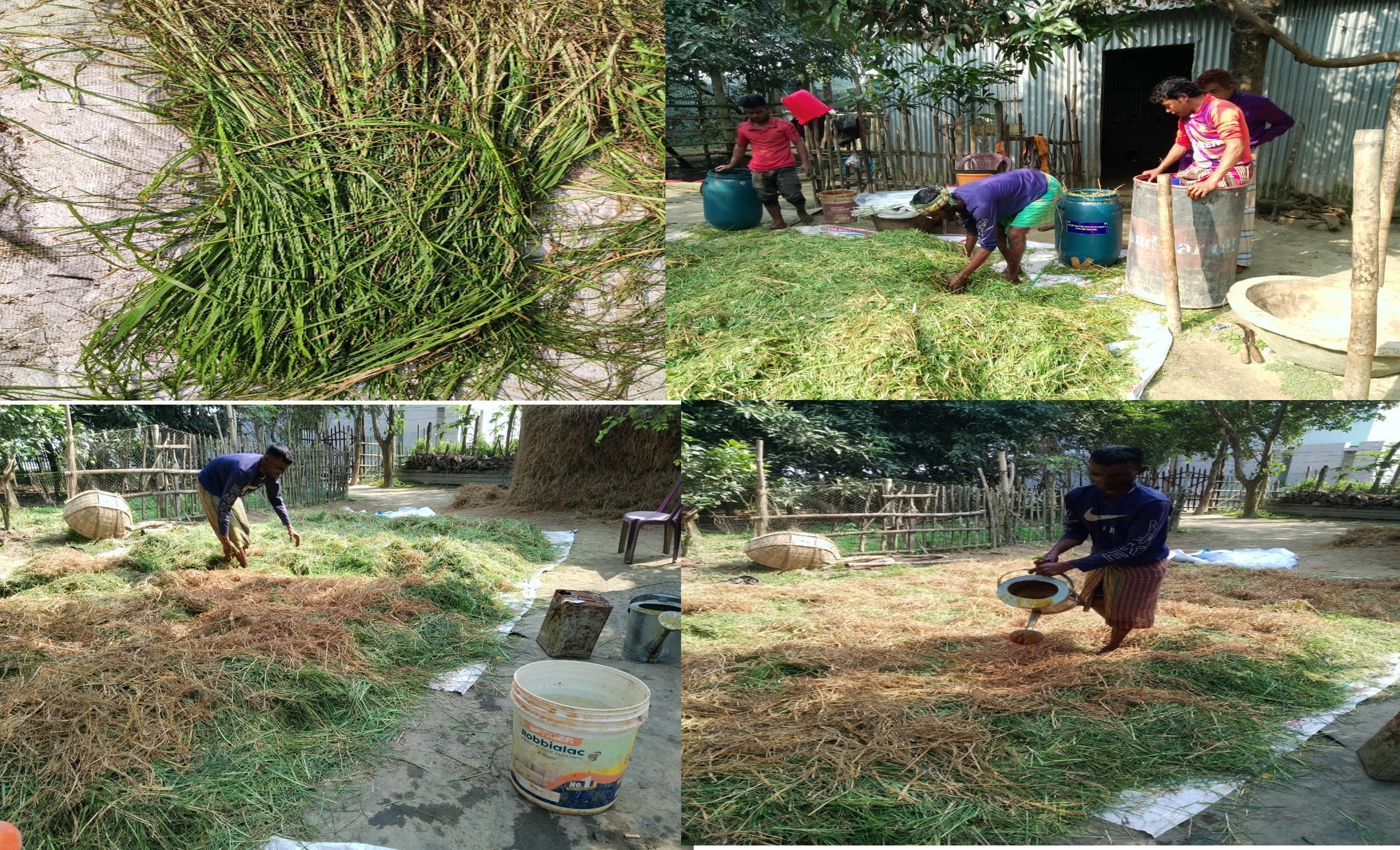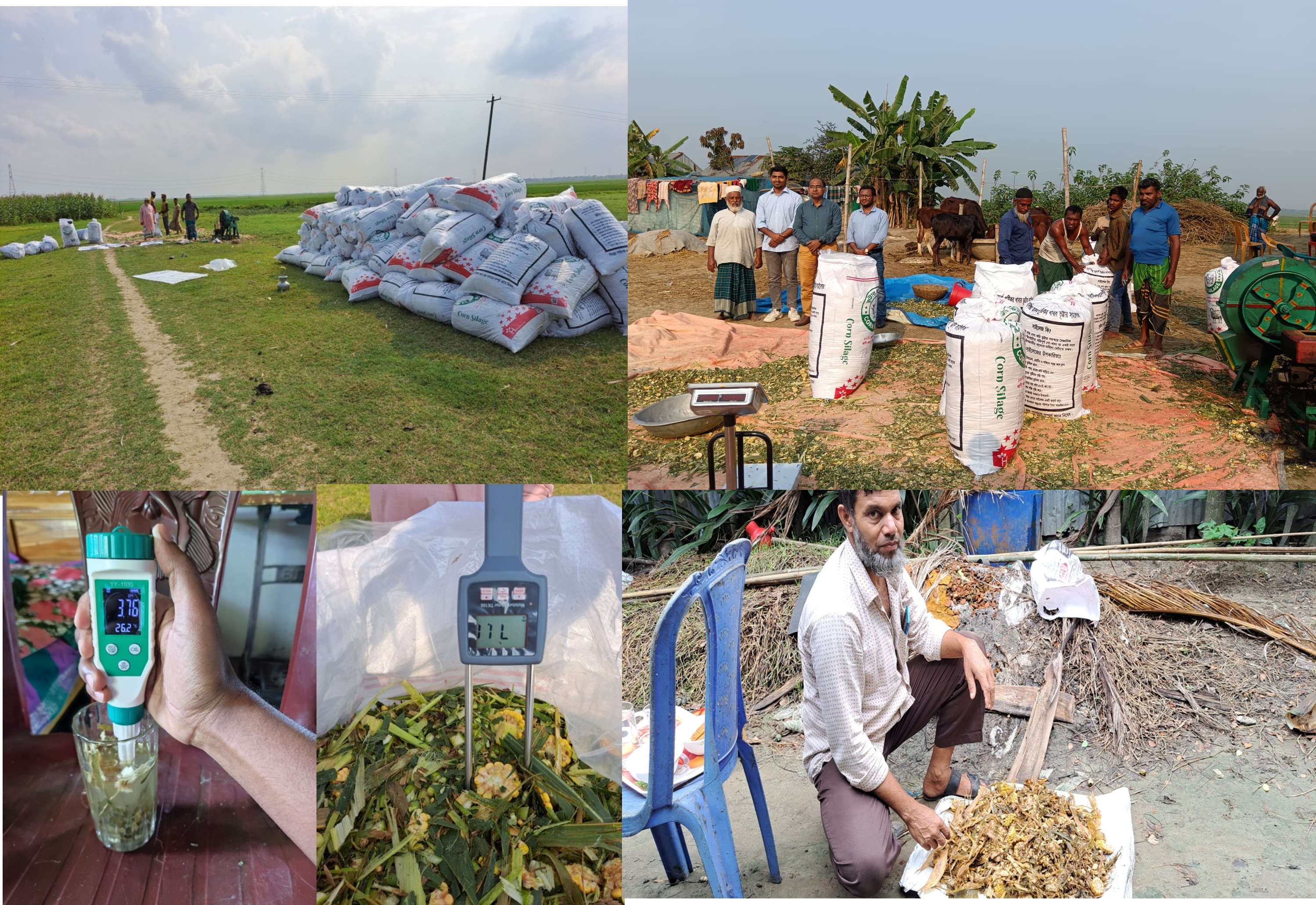Production and conservation of maize fodder as locally available in haor areas for feeding dairy cows
The Haor region in Bangladesh, a unique wetland ecosystem, supports significant rice, fish, and livestock production but faces challenges like seasonal flooding and fodder scarcity. High-yield cattle struggle due to inadequate nutrition, as farmers rely on low-quality rice straw and scarcity during rainy season. This report highlights livestock management, constraints, and feasibility of ensiling maize fodder instead of maize grain as well as chela grass in haor areas of Bangladesh.
The study was conducted in Mithamoin, South Surma, and Mohonganj haor areas. Surveys assessed livestock productivity and feeding practices, while experimental fields cultivated maize for fodder and silage production in selected area. Silage quality was analyzed using moisture meter, pH and physical status. Farmers were trained in ensiling techniques. Chela grass was also ensiled for conservation in haor areas. Data were statistically analyzed to compare chemical composition, nutrient yield and economic feasibility for silage production and profitability as well as feeding livestock’s.
Before monsoon farmers selling rice straw to the outside of the haor area, so scarcity of feeds and fodder even straw occur during last stage of monsoon (July to November). In Mithamoin showed the highest livestock productivity due to better infrastructure and market access of products, while Mohonganj and South Surma faced challenges. Maize silage production proved more profitable than grain production from the existing production system. Farmers' adoption of silage production was limited by storage constraints and lack of awareness was addressed by training and method demonstration. The study highlights the need for high yielding maize varieties for silage making, improved storage facilities, farmer training, market development among the haor areas. Chela grass found suitable to conserve after 4-6 hours wilting and conserve in the bunker using polythene anaerobically.
o Biomass yield is higher at the age of 120 days and has optimum moisture for silage making, but earlier dates are also suitable for ensiling. o Maize cultivated for fodder yields higher biomass and better economic returns than grain production. o Initial studies suggest that ensiling Chela grass and molasses could be a promising strategy for fodder conservation, but 4-6 hours wilting is important for the silage quality. It is recommended to conserve in banker/trance silage to reduce cost of conservation in bags. o Marketing outside of haor area has limitations for transportation, market linkage and cost involvement, so recommended for the livestock’s in haor areas where crossbred cattle’s are available.
o Biomass yield is higher at the age of 120 days and has optimum moisture for silage making, but earlier dates are also suitable for ensiling. o Maize cultivated for fodder yields higher biomass and better economic returns than grain production. o Initial studies suggest that ensiling Chela grass and molasses could be a promising strategy for fodder conservation, but 4-6 hours wilting is important for the silage quality. It is recommended to conserve in banker/trance silage to reduce cost of conservation in bags. o Marketing outside of haor area has limitations for transportation, market linkage and cost involvement, so recommended for the livestock’s in haor areas where crossbred cattle’s are available.
The project is designed for long-term impact, ensuring sustainability through government integration, institutional collaboration, and financial support mechanisms. 1. Government & Institutional Support: The project aligns with the Department of Livestock Services (DLS) and Krishi Gobeshona Foundation (KGF) to promote silage production as part of national livestock development. Bangladesh Agricultural University (BAU) and Sylhet Agricultural University (SAU) continue research on flood-tolerant maize varieties and cost-effective ensiling techniques. 2. Farmer & Cooperative Involvement: Encouraging group-based silage production and storage, ensuring collective bargaining power and bulk sales. By leveraging institutional partnerships and farmer-driven entrepreneurship, the project ensures long-term sustainability beyond its initial funding phase.


